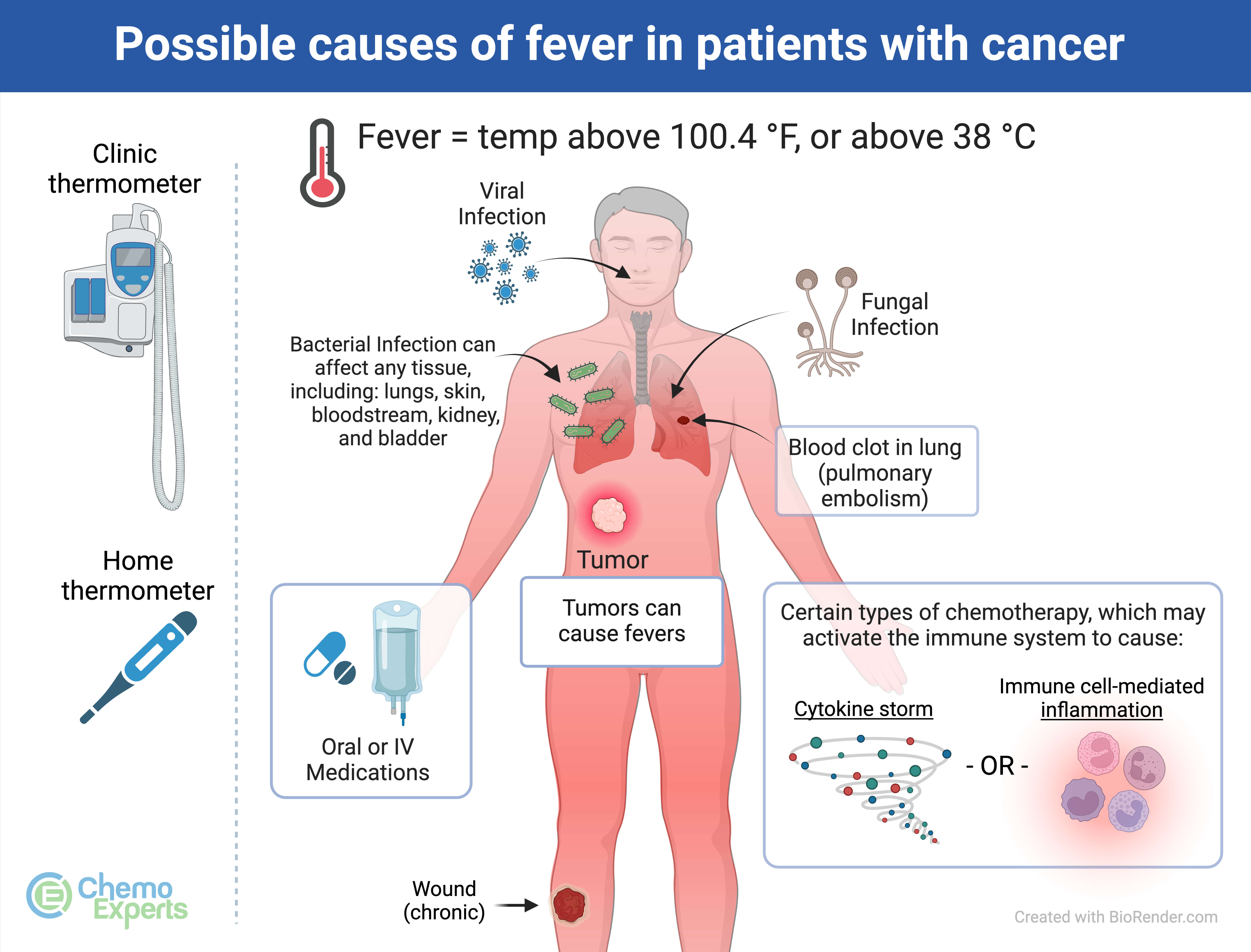Side Effect: Fever
What is Fever?
A fever is a temporary increase in the body's temperature, usually in response to an infection or inflammation. Normal body temperature is around 98.6°F (37°C), but a fever is considered to be present when the temperature rises above 100.4°F (38°C).
What does Fever look like?
Fever can look different in different people, but common symptoms include feeling hot or cold, sweating, shivering (also known as rigors), and fatigue. Other symptoms may depend on the underlying cause of the fever.
Fever

Click to enlarge
It may be useful to bring your home thermometer to clinic to determine how accurate it is compared to the clinic thermometer. This will allow you and your doctor to trust the measurement you obtain at home.
How does having cancer increase the risk of getting a fever?
Cancer patients are more susceptible to developing a fever because cancer and cancer treatments can weaken the immune system. Chemotherapy, radiation therapy, and surgery can all suppress the immune system, making cancer patients more vulnerable to infections that can cause fever. Additionally, certain types of medications may cause a fever. For example, a commonly used medicine used to prevent and treat bone loss, known as zoledronic acid (Zometa®) may cause a fever shortly after the infusion.
How do you prevent a fever in a cancer patient?
Preventing a fever in cancer patients requires a multi-faceted approach that includes infection prevention measures, such as hand hygiene, avoiding contact with sick individuals, and vaccination. Patients with cancer may also benefit from prophylactic antibiotics and antiviral medications in certain instances, such as after specific treatment regimens that suppress the immune system, or if the immune system is weakened from a bone marrow disorder.
When patients require large doses of corticosteroid for a long period of time, a specific antibiotic, known as Bactrim (sulfamethoxazole/trimethoprim) may be given to prevent an opportunistic infection known as PJP pneumonia (pneumocystis pneumonia). Patients who cannot take Bactrim due to a “sulfa” allergy may benefit from other medications such as pentamidine, atovaquone, or dapsone when used to prevent PJP infection from long-term corticosteroid use.
How do you treat a fever in cancer patients?
The treatment of fever in cancer patients depends on the underlying cause. It is important to identify the source of infection and treat it with antibiotics, antiviral medication, or antifungal medication if necessary. Acetaminophen and nonsteroidal anti-inflammatory drugs (NSAIDs) can also be used to reduce fever in patients with cancer, but before doing so patients should receive permission from their doctor to make sure these medications are safe. Both acetaminophen (Tylenol), and NSAIDS such as ibuprofen (Advil®, Motrin®) have the ability to “mask” a fever, meaning that the person does not feel the full effect of the fever and if they check their temperature, it does not rise above 100.4°F (38°C). Masking a fever with medication when an infection is causing the fever can be dangerous if the infection is not being managed appropriately. Ask your doctor if it is okay to take medications to treat a fever if it arises, or if it is best to wait to obtain blood cultures or start antibiotics first.
Created: September 19, 2023
Updated: September 19, 2023

